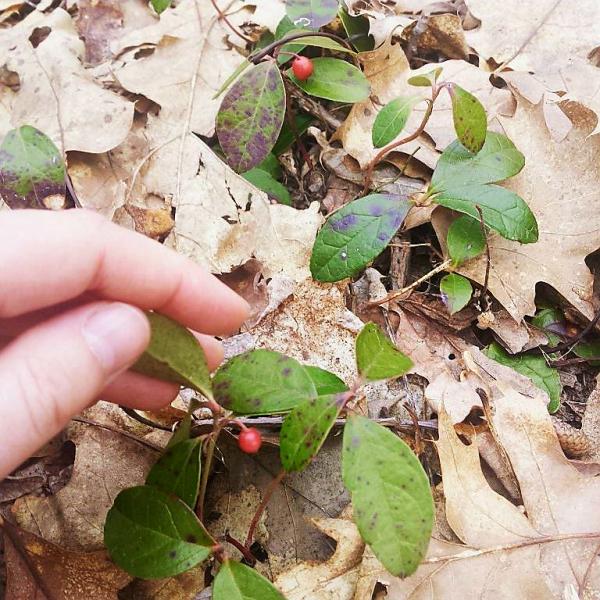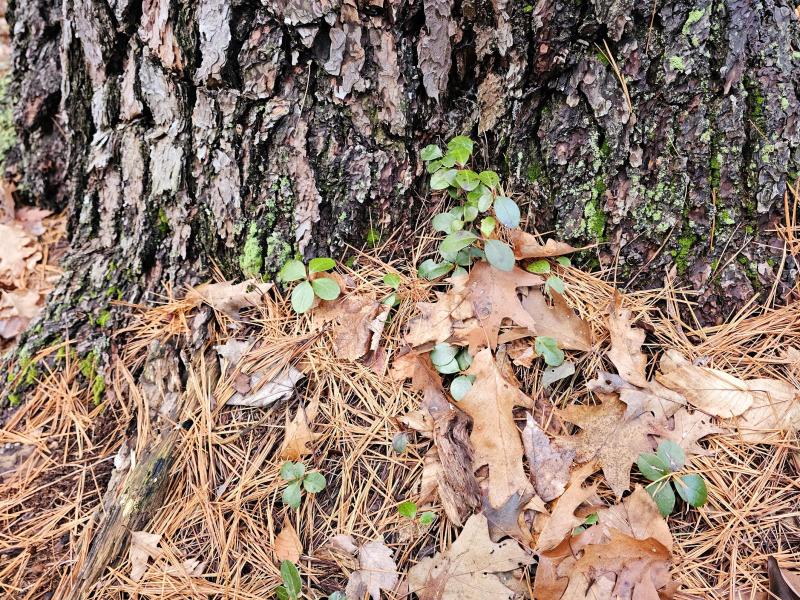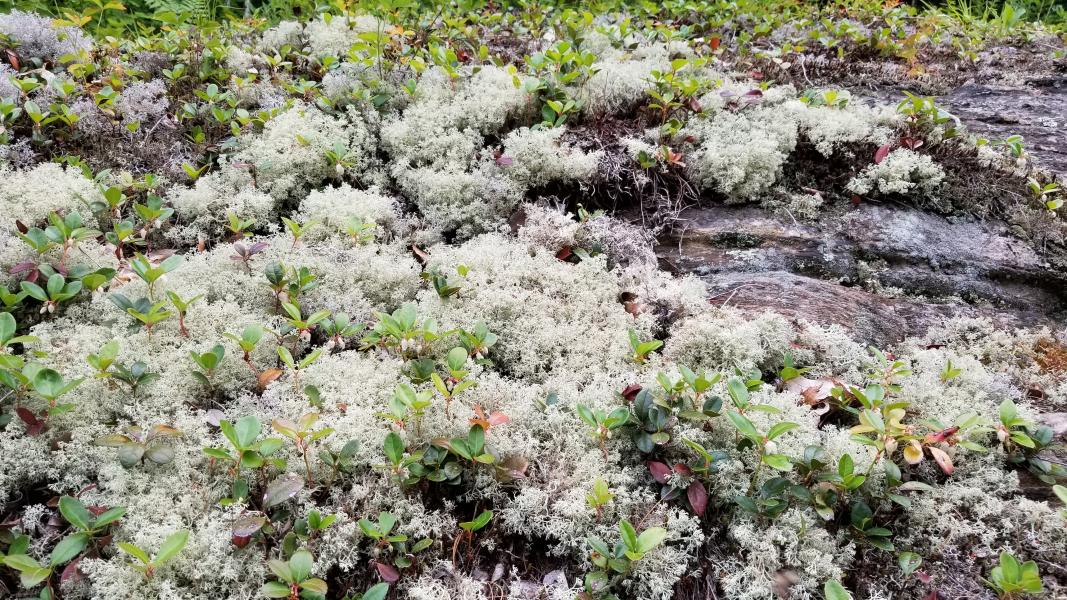Wintergreen
Gaultheria procumbens L.
Ericaceae
Image

Wintergreen plants in bloom, growing out of reindeer moss (Cladonia spp.). Photo credit: J. Dolan 2018
Names and Their Meanings
Wintergreen - Gaultheria procumbens L.
Kanienʼkéha
Teyun’rahdasta:te, kanenrahtà:tens “thick leaves”
Anishinaabemowin
Wiinsibak, Wiinisiibag, Wiinisiibagad, wini’sibugons’, wini'sibagons (singular), - ak (plural), wiinisiibag/ oon, owiinisiimin/an
French
Thé des bois, Gaulthérie couchée, Thé rouge
Wintergreen
Description
Wintergreen are and have been used for food, beverage and medicine by Haudenosaunee and Anishinaabe people for centuries. Frances Densmore noted among Anishinaabe that the aromatic and astringent leaves were used in food, and as a beverage, by tying them in a bag made of basswood bark, and boiling them with approximately a quart of water to a handful, and drunk with or without maple sugar. Scott Herron wrote that wintergreen contains methyl salicylate (caution when using!), and as such has been used among Anishinaabe for fevers, headaches, rheumatism, aches and pains.
Conservation Status
S5 (Secure) in Ontario



